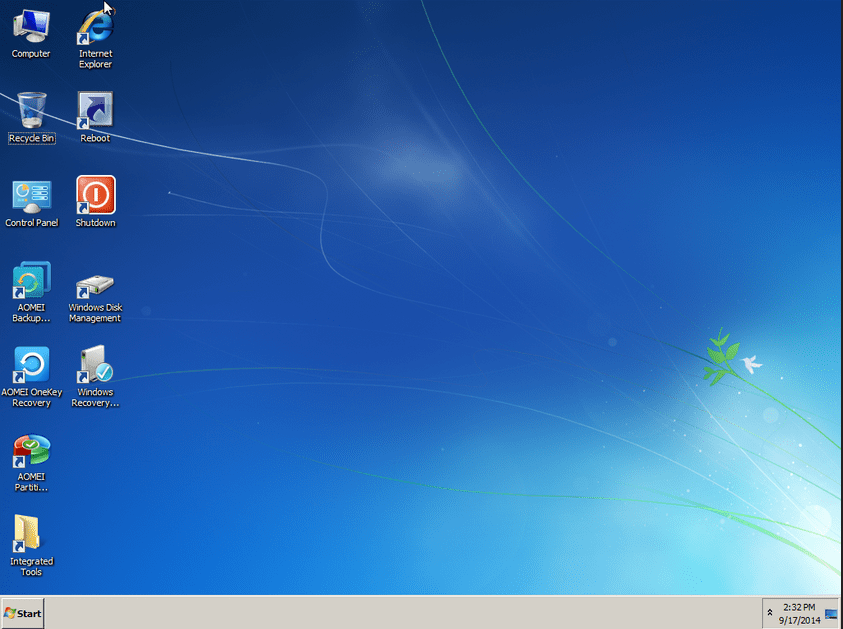

- #Aomei windows pe builder review install
- #Aomei windows pe builder review drivers
- #Aomei windows pe builder review full
#Aomei windows pe builder review drivers

Of course, commands such as Out-GridView will not work.Īdditional changes you could make in the customization phase of the WIM file could be: Since you can now run PowerShell, some modules (depending on their requirements) can also run in this environment. If you’d like to, you can make a little modules folder and additional applications on the USB key. At this point, we have customized bootable USB key with lots of PowerShell goodies. There are some additional bits to be aware of. It should boot up naturally, but if you’d like to play it safe, we can ensure the boot code is injected to the USB key: So with the location of the USB key and our files ready to be copied, we can place the files on our USB key:Ĭopy-Item -Path "$WinPETemp\Media\*" -destination "$WinPeKey\" –Recurse True…I’m not very creative with my PowerShell object names. $DriveLetter=($Disk | Get-Partition).DriveLetter The property we are interested in is DriveLetter, and we will store it away like this: There only one partition on a bootable removable USB key, so only one will show up. If we need to find the available partitions, we can pipe this to Get-Partition: $Disk= Get-Disk | Where-Object | Out-Gridview –passthruĮarlier we defined a partition on this USB key. To choose the USB key, we used this pretty cool little script to display and select the key we wanted to make bootable: Our USB key is sitting in the variable defined by $Disk. Our folder structure in question sits in the Media folder under the structure defined by $WinPEtemp. (Oops! Sorry! I was watching Blues Brothers last night.)
#Aomei windows pe builder review full
Let’s remember that we’ve got that bootable USB key-a complete structure from Windows PE-sitting on our hard drive…a full tank of gas! Populate a bootable USB key with content from Windows PE Build a PowerShell-Enabled Windows PE Key: Part 5.Build a PowerShell-Enabled Windows PE Key: Part 4īuild out the necessary file structure for a Windows PE environment.Identify available USB keys and make them bootable devices Build a PowerShell-Enabled Windows PE Key: Part 3.Build a PowerShell-Enabled Windows PE Key: Part 2Ĭustomize a Windows PE environment to contain Windows PowerShell and DISM modules.
#Aomei windows pe builder review install
Install the Windows ADK and validate its presence with Windows PowerShell


 0 kommentar(er)
0 kommentar(er)
